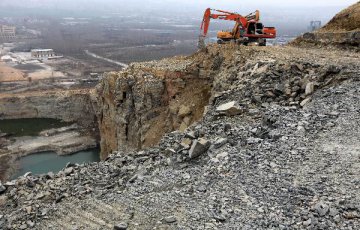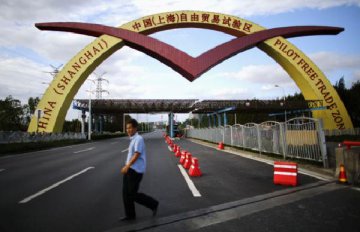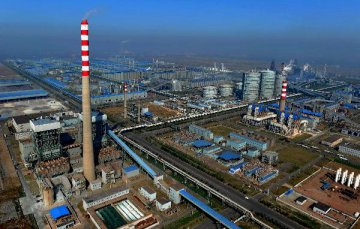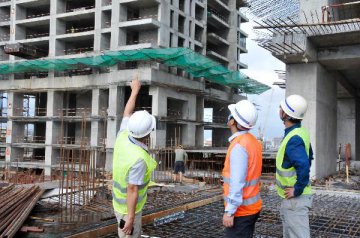 What will local governments do about the economy in the second half of this year? They have conveyed clear signals at recent meetings analyzing economic situation.
What will local governments do about the economy in the second half of this year? They have conveyed clear signals at recent meetings analyzing economic situation.SSN learns from meeting message that when making economic deployment for the second half, many places prioritize stable economic growth, propose to expand effective investment and give full play to effective investment’s significant functions in stabilizing growth.
In order to expand investment, many places have taken actions. A batch of major projects with total investment amount more than 1.8 trillion yuan will start construction in Jiangxi, Zhejiang, Henan and other provinces in the second half.
In addition, they stress enlarging private investment. According to rough statistics by SSN, six regions including Guizhou, Gansu, Anhui, Sichuan, Shandong and Inner Mongolia successively launched PPP demonstration projects in recent one month, with aggregate investment amount exceeding 750 billion yuan.
Many places prioritize expansion of effective investment
30 provinces across China except Heilongjiang have released GDP data for the first half. The statistics show that economic growth of 18 among the 30 provinces in the first half has outpaced the expected GDP growth target of this year.
However, the economic growth of the rest 12 ones in the first half is lower than annual growth rate. Shanxi and Liaoning provinces suffered the slowest growth with only 3.4 percent and -1 percent in the first half respectively, while their economic growth targets 6 percent for the whole year.
After the GDP data was released, various places convened meetings to analyze economic situation in the first half and make economic deployment for the second half. As of the economic work for the second half, they all mentioned two major aspects, namely, supply-side reform and expanding effective demand.
In terms of detailed measures, many places put expanding effective investment in the first place and major measure is to focus on investment in major projects.
For example, Liaoning government proposes to underline project development, strive to expand investment, and focus on a batch of major engineering projects with great investment from the country, strong driving power and good economic effectiveness. Guangxi government indicates that it will always highlight stable economic, emphasize stable investment and give full play to the role of effective investment especially private investment in stabilizing growth.
“Based on the economic momentum of the second quarter, more efforts should be in stabilizing economic growth in the second half; otherwise, it might be challenging to achieve this year’s growth target.” said Zhang Jun, chief economist from Morgan Stanley Huaxin Securities, in SSN’s interview.
In the opinion of Zhang, the stable growth in the second half still depends on infrastructure investment under the premise that real estate investment has been sluggish and the central government wants to curb asset price bubble.
Seen from the local economic data in the first half, infrastructure investment in many provinces maintains a double-digit growth rate, higher than the investment growth of real estate and manufacturing industries. Growth of infrastructure in Northeast China and central and western China is generally higher than that of Each China. Liaoning, Heilongjiang, Gansu and Chongqing provinces see a growth of more than 30 percent in infrastructure investment.
Key investment projects totaling over RMB1 trln to launch
Many places have taken actions to expand investment and their focus is on infrastructure field.
Zhejiang held a ceremony at end-July for launching key projects to effectively expand investment in the second half. 668 key projects across the province, totaling 714.6 billion yuan, joined in the ceremony. 98 projects, aggregating 123.2 billion yuan, are related to transportation and energy.
Many other provinces have listed their investment plans for key projects while arranging work in the second half.
Jiangxi proposes to strive to launch a batch of key projects totaling over 400 billion yuan in the second half. Its focus will be mainly laid on a batch of infrastructure projects.
Henan vows to highlight investment in key projects. It will go all out to invest in 8,000 key projects, totaling 1.6 trillion yuan, throughout the year and strive to complete investment in 4,226 key projects, totaling over 700 billion yuan, in the second half.
It can be known from a brief calculation that the investment in key projects of Zhejiang, Jiangxi and Henan in the second half alone surpasses 1.8 trillion yuan.
The journalist also notices that there is still large room for investment in transportation infrastructure in the second half.
The investment goal in the construction of highway and waterway throughout the year is set as 1.8 trillion yuan. But data from the Ministry of Transport shows that the fixed investment in the highway and waterway industry records only 781.3 billion yuan in the first half, suggesting that over 1 trillion yuan investment in transport infrastructure will be released in the second half.
RMB100 bln PPP projects launched to attract private investment
Many places all make the effort in actively expanding private investment. Many provinces have taken their moves, for instance, launching a batch of PPP demonstrative projects to attract participation of private placement.
According to incomplete statistics by the journalist, six provinces which are Guizhou, Gansu, Anhui, Sichuan, Shandong and Inner Mongolia have launched PPP demonstrative projects in recent month, aggregating an investment over 750 billion yuan.
The investment scale of PPP demonstrative projects in Guizhou, Gansu, Anhui and Inner Mongolia all exceeds 100 billion yuan.
Notably, many places have established PPP guidance fund to boost the enthusiasm of social capital in participating in PPP projects. The size of guidance funds in Heilongjiang province and Xinjiang Autonomous Region both goes beyond 100 billion yuan. The size of guidance funds established in Shandong, Fujian and Zhejiang all exceed 10 billion yuan. In addition, provinces like Hunan, Hainan, Shanxi and Gansu are also making preparations for the establishment of PPP guidance funds.
In the eyes of Zhang, local areas can “shoot two hawks with one arrow” by launching PPP projects. On the one hand, not much room is left for central fiscal policies, while local governments have to deleverage their debts, so local governments can introduce private capital through PPP projects to partly solve capital difficulties. On the other hand, only by enabling private capital to participate in previously monopolized industries through PPP projects can their enthusiasm be truly stimulated.
Translated by Jennifer & Vanessa
























Latest comments